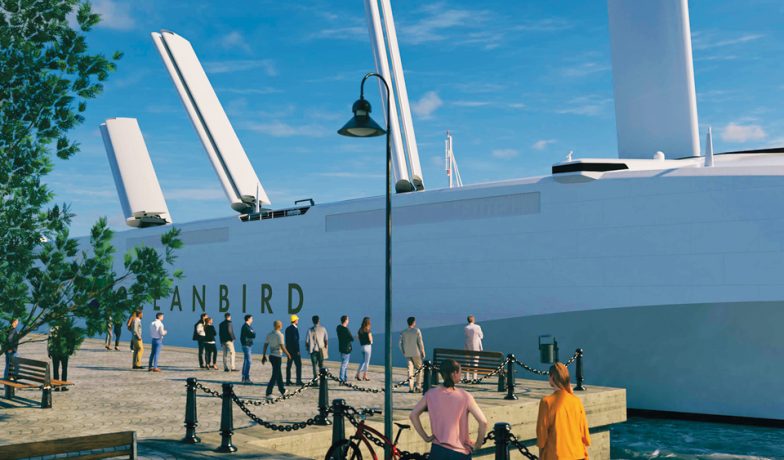Research Project Underway to Test Wind-Powered Vessel
Project Development
Oceanbird was started by two Swedish companies – Wallenius Marine and Alfa Laval. Creative thinking started in 2015. Oceanbird took a big step in January 2023 when project leaders and partners made two major announcements. First, they have an actual vessel on which to test their ideas. The Oceanbird team will retrofit a test rig onto the Tirranna, a Wallenius Wilhelmsen RoRo (roll on/roll off) vessel during the Tirranna’s drydocking in mid-2024. That work will follow a full-scale land-based demonstration underway in 2023.
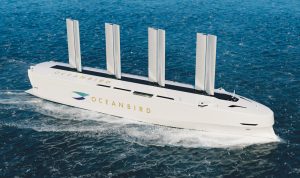
Second, Wallenius Wilhelmesen and 10 other project partners – including Volvo, Maritime CleanTech and KTH Royal Institute of Technology – announced receipt of a €9 million ($9.9 million U.S. currency) award from Horizon Europe, a key EU R&D funding program. The Horizon funds will help pay to develop, over the next five years, the Orcelle Wind: a new, 220-meter-long wind powered RoRo auto-truck carrier with a 7,000-vehicle capacity. Based on modeling, engineers calculate that it is theoretically possible to reduce emissions from vessels by up to 90 percent if all emissions-influencing factors are aligned.
With sails, wind is the main energy force, of course. Oceanbird engineers use the term “wing sails,” and explained that Oceanbird sails have more in common with airplane wings than traditional sails. The wing consists of a main sail and a flap, optimizing aerodynamic forces. Wings are made of high strength steel and glass fiber. When entering harbors, passing under bridges or if the surface area needs to be reduced due to dangerous winds, the smaller segment folds into the other before the whole wing sail is tilted down to the deck.

Niclas Dahl is managing director for Oceanbird. In an interview Dahl expanded on some of the concepts that underly the Oceanbird project.
An initial project goal is to retrofit existing ships, to develop a technology applicable on most commercial vessels working today. Oceanbird uses an active phrase: “Reducing a lot on a few, and even more from a lot.” The first part references new vessels, still to come; those CO2 reductions will be large. The second part references existing vessels. Oceanbird writes that there are 60,000 existing commercial vessels that could possibly use wing sails. Total CO2 reductions from all those vessels could be quite large, even though individual reductions might be relatively small.
Oceanbird’s initial focus is on RoRo vessels. The company estimates that one wing sail on an existing RoRo vessel, traveling at normal speed, can reduce fuel consumption from main engines by seven to 10 percent on favorable oceangoing routes. This would save approximately 675,000 liters of diesel fuel per year and prevent approximately 1,920 tons of CO2 emissions per year, again, per vessel.
Dahl said that engineers are finalizing the design and ordering parts. They are on schedule to complete the land-based mock-up this year, critical work in order to be ready for the Tirranna retrofit in 2024.
Dahl explained that a retrofit involves securing the mast foundation to a location on the ship’s deck. Engineers need to identify free deck space for each new mast. Placement requires reinforcement within the hull. This spreads out or dissipates the force of the wind to best take advantage of thrust. There is no below-deck infrastructure. Cargo space is not displaced.
Dahl said some ships might need more reinforcement than others. The work ongoing now provides a learning curve for numerous issues, from assembly to mechanics to automation, not to mention safety at sea issues such as stability challenges.
“Then in 2024 we will put it on the vessel in a real-life condition,” Dahl explained. He said that every ship is different, presenting different needs. With a container ship, for example, engineers are evaluating how to install windsails that don’t interfere with loading/unloading. In contrast, construction and placement on a tanker would likely be different, Dahl said, because a top concern is to avoid alterations that might compromise safety. “The wind sail will be uniform.” he explained. “The foundation will change but the sail will be the same.”
Dahl said cost estimates for the retrofit will become clearer as the 2023 land-based project advances and after working on the first drydocked vessel in 2024. Project construction will depend on vessel type and the scope of the project. “Now everything is new,” he said, “that’s why the land-based practice is so important. It’s the first step. The more we do, the faster we will get.”
Pertaining to the Great Lakes
Dahl was asked about windsail application within the Great Lakes. He explained that most of the Oceanbird research is based on wind areas in the Pacific and the Atlantic, that modeling for performance and benefits did not include the Great Lakes. He added, however, that this technology is being developed for all vessels sailing worldwide and, of course, wind is ubiquitous. The relative advantages from new sail technology could vary depending on location.
It’s important to view Oceanbird within the larger policy context that surrounds and characterizes efforts to reduce maritime greenhouse gas (GHG) emissions. One policy initiative looming on the horizon is a carbon tax, obviously a tax to avoid by shifting away from carbon-based fuels.
Another policy initiative that just took effect this year is the IMO’s Carbon Intensity Indicator (CII), which requires GHG recordkeeping, auditing and reporting. Most importantly, the CII, over the next few years, demands increasingly stringent limits on GHG emissions. The CII establishes a three-year implementation plan. Most vessel owners are likely familiar with the CII and the annual five-grade rating scale (A, B, C, D and E) indicating five performance levels: major superior, minor superior, moderate, minor inferior and inferior. The CII is required for each vessel.
The need to act now was repeatedly emphasized by participants at the Oceanbird event last January. Maritime leadership, speakers commented, can no longer kick this can down the road, they have to begin to move decisively and measurably toward different fuels or different operations to document CO2/GHG reductions.
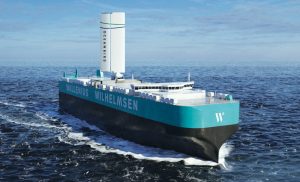 It’s these inevitable pressures from money and policy that work to support Oceanbird, and projects like it. Dahl noted that, indeed, these drivers give impetus to decisions about low-carbon investments. The lesson is clear. For vessel owners: something must be done. The low-carbon business case is being pushed, fairly or not, by a general expectation that the price of fossil fuels will continue to rise, perhaps steeply. Maybe that increase alone would not reach a tipping point about a new vessel or even retrofitting an existing vessel. But when a carbon tax is added in, a tax also likely to increase with time, and as low-carbon policy demands intensify from established regulatory bodies like the IMO and Asian and European state agencies the handwriting becomes clear: do something.
It’s these inevitable pressures from money and policy that work to support Oceanbird, and projects like it. Dahl noted that, indeed, these drivers give impetus to decisions about low-carbon investments. The lesson is clear. For vessel owners: something must be done. The low-carbon business case is being pushed, fairly or not, by a general expectation that the price of fossil fuels will continue to rise, perhaps steeply. Maybe that increase alone would not reach a tipping point about a new vessel or even retrofitting an existing vessel. But when a carbon tax is added in, a tax also likely to increase with time, and as low-carbon policy demands intensify from established regulatory bodies like the IMO and Asian and European state agencies the handwriting becomes clear: do something.
The Oceanbird team feels they are in a strong position. Wind is free, although taking advantage of it requires initial investment. But a vessel with the Oceanbird technology can still use its existing fuel – just less of it, and with no issues about refueling in ports, while still making progress towards new CII requirements. The windsail apparatus will not impact cargo operations. Oceanbird engineers are confident in their R&D, and in their approach to developing and testing their product. They are confident they have a great start for sustainable shipping worldwide. Finally, they want this knowledge and tech to be widely disseminated and adopted, not held as a closely guarded secret used just by a few.
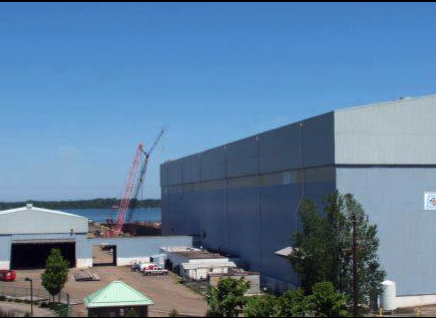
Donjon Marine Acquired by Investment Firm Tallvine
Donjon Marine Co. LLC, which operates a shipyard in the Great Lakes, has been acquired by Miami-based investment firm Tallvine Partners. Donjon Marine was founded in 1964 and operates dredging,... Read More
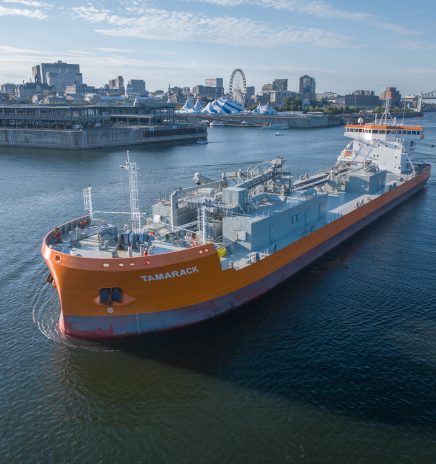
M/V Tamarack is First Newbuild Cement Ship in the Great Lakes in 20 Years
M/V Tamarack arrived at the Port of Montreal on August 22, completing her maiden transatlantic voyage and marking a major milestone in North American shipping. Owned by Eureka Shipping, a joint... Read More

